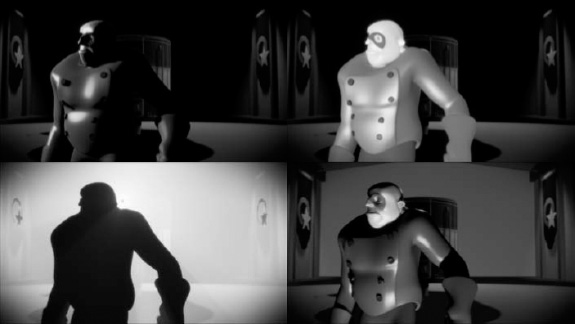Lighting a Scene
Lighting has an incredible amount of power to convey your scene to the viewer. Harsh, stark lighting can give you a dramatic film noir look. Low-angle lights with long shadows can give you a creepy horror movie feeling, whereas brighter high-angle lights can make things look like they are taking place during a beautiful summer day. Or, you can use a bluish light that projects a hard noise cloud texture and makes your scene feel like it's happening under water.
Equally important is setting up your environment. Depending on how you set it up, you can achieve a variety of looks. You can set your scene in an infinitely large white space, commonly known as the white void in film and television. Or, you can adjust your environment such that your scene takes place outside during the day or somewhere on the moon. When you combine good lighting and a few additional tricks, you can make your scene take place just about anywhere. Figure 9-1 shows a pretty simple scene with a few different environment and lighting schemes to illustrate this point.
Figure 9-1: Different lighting configurations can drastically affect the look of a scene.

Understanding a basic three-point lighting setup
Before I get too deep into how you light a scene in Blender, you should understand some standard lighting setups and terminology. The cool thing is that most of this information isn't limited to ...
Get Blender For Dummies®, 2nd Edition now with the O’Reilly learning platform.
O’Reilly members experience books, live events, courses curated by job role, and more from O’Reilly and nearly 200 top publishers.

